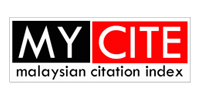Optimal modeling of perovskite solar cell with graphene oxide as hole transport layer using L32 (28) Taguchi design
DOI:
https://doi.org/10.58915/ijneam.v17i1.448Keywords:
Analysis of variance, Graphene oxide, Hole transport layer, Power conversion efficiency, Signal-to-noise ratioAbstract
Material parameter variations are one of the main contributors affecting the performance of solar cell devices, thus, Taguchi design is employed to optimize the material parameters in attaining maximum power conversion efficiency (PCE). This paper discusses the optimal modeling of the Perovskite solar cell (PSC) with graphene oxide (GO) hole transport layer (HTL) using L32 (28) Taguchi design. The device simulation is conducted using a solar cell capacitance simulator (SCAP), whereas the L32 (28) Taguchi design is used for device optimization. The final results reveal that the L32 (28) Taguchi design has significantly optimized the device parameters in which FTO thickness, FTO donor concentration, TiO2 thickness, TiO2 donor concentration, CH3NH3PbI3-xClx thickness, CH3NH3PbI3-xClx donor concentration, GO thickness and GO acceptor concentration are predictively set to 0.1 µm, 1 x 1020 cm-3, 0.03 µm, 1 x 1020 cm-3, 0.9 µm, 1 x 1020 cm-3, 0.03 µm and 1 x 1020 cm-3 correspondingly. Analysis of variance (ANOVA) reveals that the CH3NH3PbI3-XClX thickness is the most dominant input parameter affecting the PCE of the device. The optimized input parameters yield the maximum attainable PCE of 35.91% with a signal-to-noise ratio (SNR) of 31.11 dB.

















